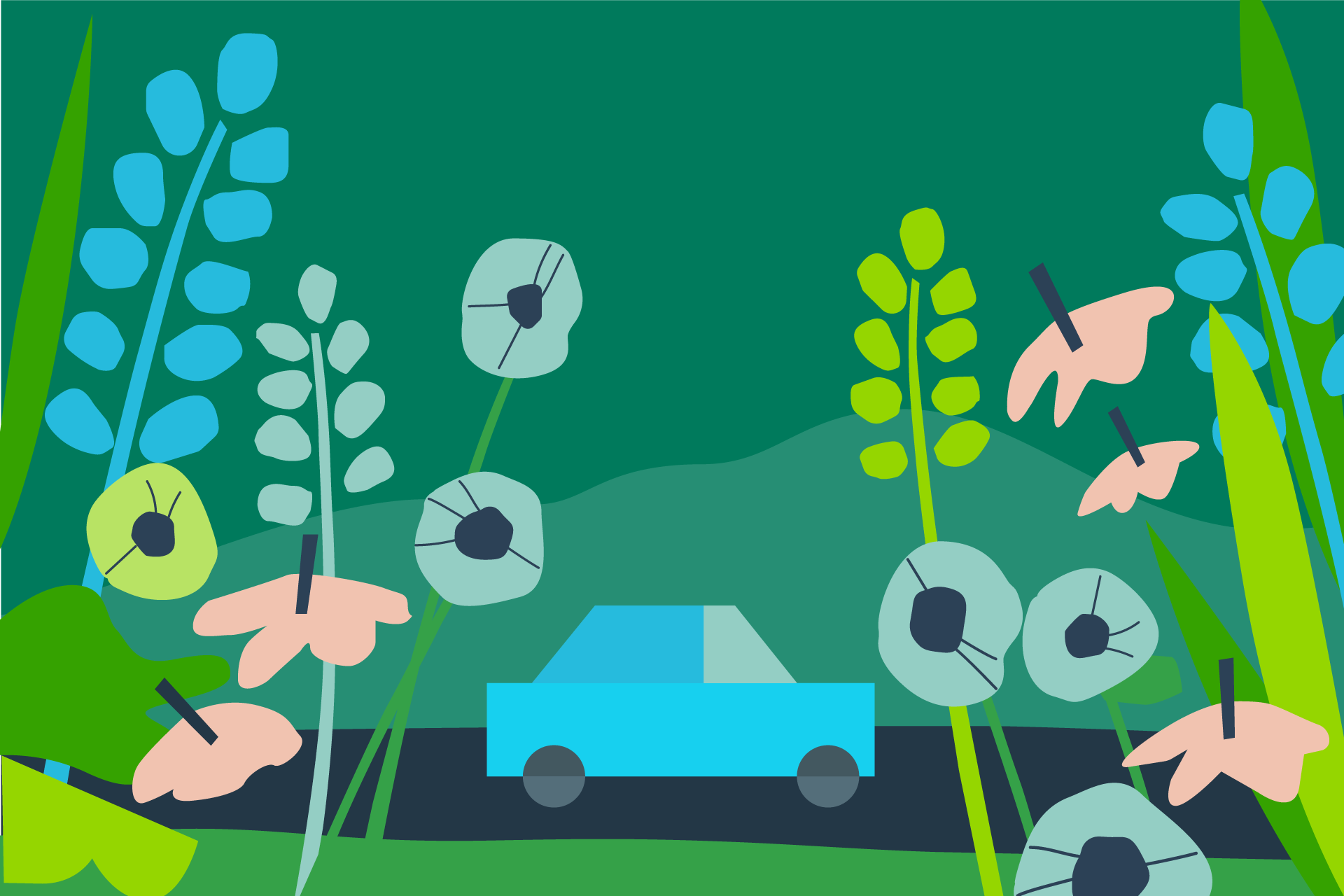What causes road rage and how to deal with it
March 3, 2022
Aggressive driving (also known as road rage) accounts for a large number of collisions each year. In a
survey conducted by the AAA Foundation of Traffic Safety in 2020, almost half of respondents (45 percent) reported driving 15 mph over the speed limit on a freeway, and 23 percent of drivers admitted to driving through a red light. Additionally, 21 percent of respondents reported switching lanes quickly or following very closely behind another car.All of these behaviors can be strong indicators of road rage.
What is road rage?
The less-than-subtle hand gesture.
A muttered “%$*!” inside the car.
Hitting the gas well over the speed limit.
These are all signs that you may be experiencing or have experienced road rage yourself or by someone else on the road. But what is road rage? The National Highway Traffic Safety Administration (NHTSA) defines a similar behavior, aggressive driving, as the act(s) an individual commits on the road that endangers other people or property. The Insurance Information Institute outlines some of these road rage behaviors that can result in injury or damages. They include:
Following improperly
Improper or erratic lane changing
Driving too fast
Making an improper turn
Passing illegally
Moves like these on the road can be dangerous to you and others, so it’s best to avoid them when you’re driving. But this begs the question, what causes road rage in the first place?
What causes road rage?
If you’re a fan of digging into the neuroscience of things like we are, you’ll enjoy this. We’ll show you the science behind road rage and what fuels that dangerous behavior behind the wheel.
The American Psychological Association gives some insight into the topic by sharing what makes some people more susceptible to road rage. Environmental factors such as crowded roads and a higher number of miles driven can make a driver more likely to experience anger behind the wheel. Displaced anger, blaming others and life stress may lead to road rage behaviors.
So, what is the tie between anger behind the wheel and road rage?
To dive deeper into the subject of anger and aggressive driving, psychologist Jerry Deffenacher found five key differences between high-anger drivers and low-anger drivers.
The first sign is when drivers are more likely to engage in hostile, aggressive thinking—for example, wanting to get revenge or insult other drivers.
Second, when drivers are willing to take more risks on the road. For example, High-anger drivers are more likely to go 10 to 20 mph over the speed limit, change lanes rapidly, tailgate and enter an intersection when the light is red.
Third, this type of driver has likely had more near-accidents and gets more tickets for speeding violations.
The fourth sign is when drivers are more likely to experience anger, anxiety and impulsiveness due to work or home stress.
The fifth sign? High-anger drivers are more likely to get agitated faster, leading to more aggressive behavior behind the wheel. This aggressive behavior could be name-calling, yelling at other drivers or honking in rage. Not only does their anger happen while driving, but it’s also likely to be carried throughout the day.
By knowing the signs of what causes road rage and potentially relating to it, you can help address ways to cope or deal with road rage.
How to handle road rage
It can be challenging to know how to approach or handle a situation where you are experiencing road rage—whether that’s you or someone else on the road.
If you’re likely to experience road rage
If you think road rage is something you experience regularly, WebMD says you may want to consider getting enough rest or sleep. A lack of sleep can lead to less control of your decision-making abilities and emotions.
Next, consider leaving earlier to get to your destination. Giving yourself enough time to avoid potential stress, anxiety and anger doesn’t sound half bad.
And last but not least, be aware of your driving. Staying present with yourself and becoming aware of what makes you angry can help reduce the road rage you feel behind the wheel. If you feel anger coming on, find a safe place to pull over and take deep breaths or listen to your favorite playlist.
Resist. Recenter. Repeat.
If you experience a road rager
People can do unpredictable things on the road, which means it’s up to you to be aware of your surroundings and control a road rage situation. WebMD has six suggestions on what you can do:
If someone is tailgating you, change lanes
Slow down and let others pass you
Don’t return that unwanted gesture
Stay behind the angry driver
If necessary, pull over or take an exit
Don’t make eye contact
It can be difficult not to get upset or angry at someone driving aggressively. But on the road, you can stay calm and carry on.
Calm behind the wheel is rewarding
Because road rage can cause unnecessary stress and anxiety, it’s important to find ways to keep calm during your daily commute. Thankfully, we have several tips for how to reduce stress while driving available on our blog.
As a HiRoad customer, when you practice mindful driving—going the speed limit, braking or accelerating smoothly and driving less distracted—you’re taking the high road. So start today. Drive less raged and more engaged.
The information in this article was obtained from various sources not associated with HiRoad®. While we believe it to be reliable and accurate, we do not warrant the accuracy or reliability of the information. HiRoad is not responsible for, and does not endorse or approve, either implicitly or explicitly, the content of any third party sites that might be hyperlinked from this page. The information is not intended to replace manuals, instructions or information provided by a manufacturer or the advice of a qualified professional, or to affect coverage under any applicable insurance policy. These suggestions are not a complete list of every loss control measure. HiRoad makes no guarantees of results from use of this information.Stay on the path
Want to compare auto insurance quotes faster?
You can save up to 50%* with HiRoad—but it’s always smart to shop around. Our free Quote Comparison Organizer makes it easy to compare insurance options in less time. Share your email and we'll send it to you.



